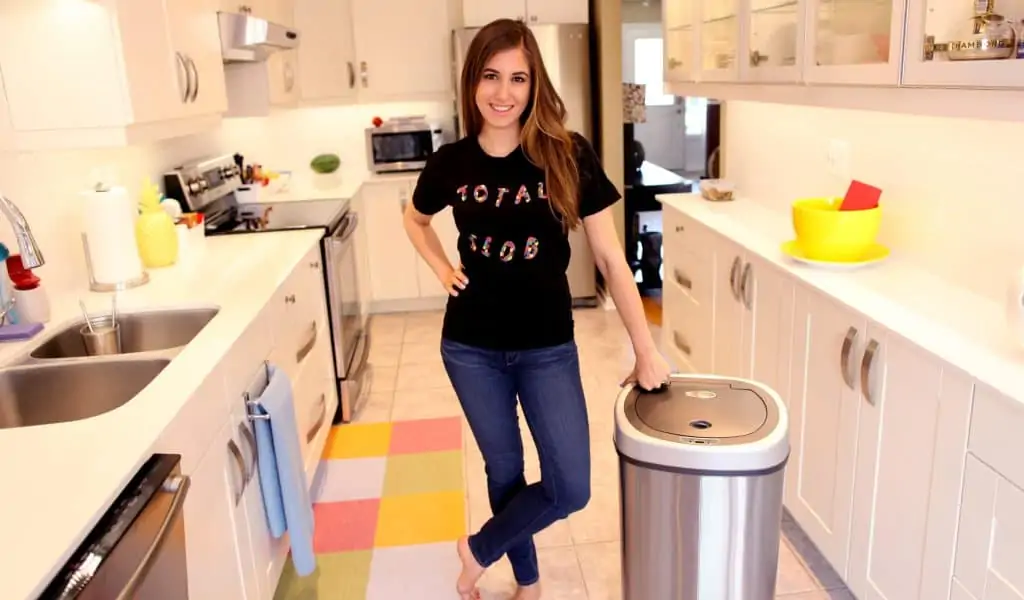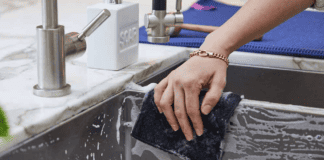At Clean My Space, we’re all about being eco-friendly. DIY cleaning products, reusable cleaning tools, and eco-friendly store-bought items are a big focus in my own cleaning and the information I share with all of you. So today, I want to discuss an issue that comes up a lot when it comes to online shopping and eco-friendly buying practices: polybags.
Polybags (plastic bags) are at the center of a lot of packaging. And I don’t just mean when you order clothes or cleaning products. Most items we order online, and some we buy in person, have contact with polybags! So let’s talk about what polybags are, where they are used, and how we can all be a little more eco-friendly.
What Are Polybags
Polybags are most commonly made from polyethylene (hence their name). Regular plastic bags (like you would get at a grocery store) are made from polyethylene as well.
However, when we talk about polybags, we’re referring to clear or branded ziplock plastic bags that all your online orders are packed in. I’m talking meal kits, clothing, electronics, toys, and everything else. These bags are made from the exact same material as plastic grocery shopping bags but, ironically, while the world has started replacing plastic grocery bags with reusable canvas bags, the same can’t be said about polybags used for shipping.
Why Is There Still So Much Plastic Packaging?
Environmentalism is a big topic right now all over the world. So why is there still so much plastic packaging? First of all, people are shopping online more than ever before. Just look at these statistics from OptinMonster. In 2020, the global online shopping market size was just under four trillion! And in 2023, it’s projected that the U.S. alone will have 300 million online shoppers (91% of the U.S. population).
Because companies are shipping more items than ever before, they rely on more polybags than they ever have. Polybags are the ideal material for shipping because they are extremely cheap to make and they are water repellant, meaning they cost-effectively keep items protected. This allows whatever you ordered to get from the factory to your door in perfect condition.
A lot of brands that market themselves as eco-friendly still ship their items in polybags—for example, Patagonia. Patagonia is an environmentally conscious company, and they even ran a case study on garment delivery and polybags in 2014 to see what their options were. Ultimately, the study determined that polybags were necessary to get their items from the factory to your door without damage.
Another example of the necessary use of polybags is in meal kit delivery. The meal-kit industry has seen a huge boost in the last few years and they are shipping more boxes than ever. To preserve the freshness of food, especially when it comes to meat, seafood, and dairy products, meal kit delivery companies and their suppliers seal items in polybags. Unfortunately, there currently isn’t a cost-effective alternative that will safely get meat and dairy products to your door.

Why Are Polybags Such a Problem?
So we’ve determined polybags are basically the only option for many, many companies. Should we just accept them? Not necessarily.
Polybags are a huge problem for the environment. Why? Because of where they end up. Unfortunately, a lot of our garbage and plastic waste ends up in our oceans. About eight million tons of plastic is dumped into our oceans every year. That’s a lot! And this plastic waste causes a lot of problems for ocean ecosystems.
We’ve all seen the video of a turtle with a plastic straw up its nose, and the dolphin with a plastic pack ring stuck around its mouth. And in the past few years a lot of companies have replaced plastic straws with paper, and plastic back rings with rings made of more eco-friendly material. However, polybags continue to be a huge contributor to the plastic that gets dumped into the ocean, and it’s a big problem for ocean wildlife and for us.
Many marine animals have been found to actually contain microplastics. This often happens because the animal ingests plastic they find in their environment. And just this week, a new study has revealed microplastics in human blood! That’s pretty scary stuff.
Are Polybags Recyclable?
Technically, polybags are recyclable. Unfortunately, a lot of recyclable material in the United States doesn’t actually get recycled. This is because plastic bags literally cost one cent to make. So it’s effectively easier to make more than to recycle old plastic.
Unless there is a business interested in purchasing recyclable materials, plastic that could be recycled often gets thrown in the trash.

The Good News
I’ve said a lot of scary stuff in this article so far, so let’s talk about the good news. There are eco-friendly brands out there who are finding alternatives to polybags, even though it means a lot more work for them.
United by Blue, an outdoor clothing brand, ships their items in 100 percent recycled content kraft envelopes and boxes printed with eco-friendly, VOC-free ink. And their brand promise is that they remove one pound of trash from oceans and waterways with every product sold. The current count on their website is 4,235,932 pounds!
The zero waste movement has made great strides in responding to our global garbage crisis. The goal of the zero waste movement is to create as little garbage as possible, sending nothing or almost nothing to the landfill. How do they do this? Composting and recycling everything they can, using only reusable containers and utensils, and choosing businesses with package-free options. It’s certainly not an easy task, but it is possible. And while not everyone who is interested in the zero waste movement is actually zero waste, the movement has helped people cut down their trash dramatically.
These are just two examples of how people are responding to the plastic crisis, and there are so many more. The zero waste website recently published the article The Top 10 Zero Waste Companies Today! On the list are Subaru, Google, Patagonia, and Lush. I always find it heartening to see big, influential companies getting innovative with eco-friendly issues.
What Can You Do?
OK, so now we’ve talked about why plastic is bad, let’s talk about what you can do. Knowing that basically everything we buy comes in plastic can feel really discouraging. But there are some easy things we can all do to help reduce plastic. Even if you aren’t ready to go zero waste (no shame, I’m not either!) there’s still so much you can do to create less trash and keep more plastic out of landfills.
- Buy once, buy well. What does this mean? When buying an item, make sure it’s high-quality and long-lasting. This way, you won’t have to trash it and replace it.
- Choose reusable items, not single-use items. For example, clean with microfiber cloths instead of paper towels. This way, you aren’t throwing your cleaning tool in the trash after you use it.
- Add a little minimalism to your life. This doesn’t mean you have to go crazy and trash all your stuff. It just means thinking more consciously about your purchases. This will ultimately save you money, reduce clutter, and benefit the environment. For some great minimalism tips, read, Is it Time to Start Living a Minimalist Life?
- Support companies and organizations that are working on solving the plastic crisis. If you notice a company uses a lot of plastic packaging, consider switching to a brand that doesn’t.
- Buy local, not online. We all have to buy online sometimes, and if you try number four on this list, you can buy from eco-friendly companies that aren’t using plastic packaging. But if you buy local and in person, your item will come with even less packaging, and you’ll be supporting local businesses.
- Go DIY. Making your own cleaning products, face scrubs, body butters, and more means you can reuse one container and choose what goes into your products.
- Choose refillable products. There are a lot of products out there now that are refillable. For example, there are shampoo and conditioner bars that can be stored in reusable tins instead of plastic bottles. There’s refillable deodorant and even eco-friendly, refillable dish soap.
Polybags and Plastic Waste
Reading about the environmental impacts of plastic waste can be overwhelming. But learning how you can make a difference is empowering. Try out some new eco-friendly products and brands, shop consciously, go DIY and refillable when you can, and teach your kids how to do the same!
Do you have more environmentally friendly tips? Please share them with us in the comments. And if you try out any of these tips, tag us on Instagram @cleanmyspace @melissamaker.
Looking for a BETTER & EASIER Way to Clean Your Home?
Cleaning Expert Melissa Maker is here to help with her game-changing 3 Wave Cleaning System that will help you clean your house faster and easier than you ever thought possible!


















to go grocery shopping i walk and take my shopping cart along with me. the one i have is a versacart brand. the point is the only fuel the cart consumes is none and there is no exhaust either
Great tip, Michael!